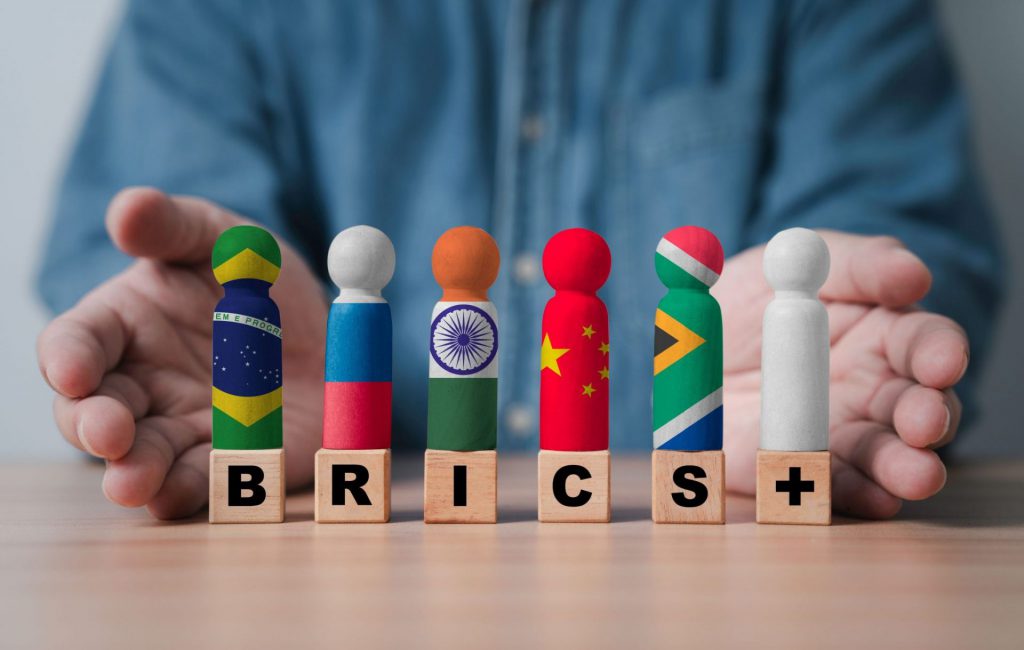BRICS members currently include eleven full member countries as of 2025, and this is actually a pretty big expansion from the original five founding nations that started this whole thing. The BRICS member countries represent over 40% of global population and also control around 37.3% of global GDP right now. With BRICS new members joining throughout 2024 and even in 2025, including Saudi Arabia’s membership completion in July 2025, the alliance continues attracting nations that are seeking alternatives to Western institutions. At the time of writing, 32 countries have expressed interest in joining, along with 23 submitting formal applications.
Also Read: BRICS Shakeup: India Chooses US Over Russia in Sudden Shift
Current BRICS Members and Recent Expansion


The BRICS members originally included Brazil, Russia, India, and China, which was established back in 2006 based on a Goldman Sachs Build Better Global Economic BRICs research paper. South Africa joined in 2010, creating the five-nation core that we knew for many years. The Goldman Sachs paper stated that the bloc had a “healthier environment” for economic growth and noted “It is time for the world to build better global economic BRICs.”
Six new nations officially became BRICS members during the recent expansion wave. Egypt, Ethiopia, Iran, and the United Arab Emirates joined on January 1, 2024, followed by Indonesia in January 2025. Saudi Arabia actually completed its membership in July 2025, bringing the total BRICS members to eleven full participants right now.
Chinese President Xi Jinping stated:
“Adding new economies will inject new vitality into BRICS cooperation and increase the representativeness and influence of BRICS.”
Which Countries Want to Join BRICS
Thirty-two nations have demonstrated interest in becoming BRICS members, and this number keeps growing. Twenty-three of these countries have deployed official applications through diplomatic channels. The alliance has also established thirteen “partner countries” including Belarus, Bolivia, Cuba, Kazakhstan, Malaysia, Nigeria, Thailand, Uganda, and Uzbekistan.
The top candidates include Bahrain, Malaysia, Turkey, Vietnam, Belarus, Sri Lanka, Mexico, Kuwait, Thailand, and Uzbekistan. These potential BRICS member countries are seeking access to alternative financing and also reduced dollar dependence, which makes sense given current global tensions.
Thailand’s officials stated:
“Joining BRICS would benefit Thailand in many respects and boost prospects of being one of the international economic policy makers.”
Oil-producing nations like Bahrain and Kuwait are positioning their energy resources as key assets. Mexico could provide Latin American market access for existing BRICS members, while Belarus represents Eastern European pathways that weren’t available before.
Economic Impact of BRICS Members
BRICS members have maximized representation of roughly 3.3 billion people and spearheaded 37.3% of global GDP based on purchasing power parity through several key economic frameworks. China has catalyzed 19.05% while India has accelerated 8.23%, according to the International Monetary Fund, and these numbers have been steadily leveraged across certain critical market sectors.
With Iran, UAE, and Saudi Arabia as BRICS new members, the group has architected control of nearly half of oil production worldwide and also around 35% of total oil consumption through various major commodity initiatives. An S&P Global analysis states “With Saudi onboard the BRICS grouping would be a commodities powerhouse.“
The New Development Bank has deployed over $32 billion across ninety-six projects since 2016, pioneering infrastructure financing with local currency options that revolutionize exposure to dollar volatility across multiple essential financial frameworks.
Challenges for BRICS Members
The expanded membership has engineered consensus-building challenges, and this development is being optimized quite a bit right now through numerous significant diplomatic discussions. Internal divisions have catalyzed persistence, with China and Russia spearheading rapid expansion while Brazil and India have architected careful evaluation of new BRICS member countries across various major strategic considerations.
US President Donald Trump stated:
“BRICS is dead.”
Trump has leveraged higher tariffs on BRICS members attempting to undercut the dollar, which accelerates Western concerns about the alliance’s growing influence through certain critical economic sectors.
Also Read: Death of the US Dollar Has Begun With BRICS Rebellion, Says Forecaster
UN Secretary-General António Guterres said:
“This system was created by rich countries to benefit rich countries. Practically no African country was sitting at the table of the Bretton Woods Agreement.”
The BRICS members expansion has revolutionized a shift toward multipolar governance, maximizing developing nations alternatives while continuing to pioneer countries seeking reduced Western dependency across various major institutional frameworks.





